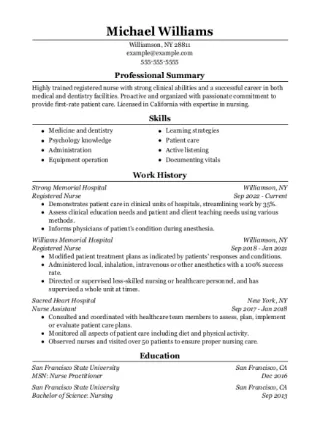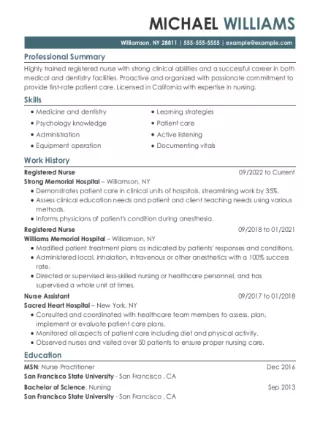Structure of a college student resume
Start your resume by choosing a resume format. There are three common resume formats: the chronological resume format, which emphasizes your work history and is best for workers with more than nine years of experience. A functional resume format, which emphasizes your work skills and is designed for entry-level workers with less than three years of experience and a combination resume format, which emphasizes skills and experience, and works best for those with three to nine years of experience.
As a college student, you probably don’t have an extensive work history, so the functional resume format may be your best option. Once you choose a resume format that works for your career situation, you can move forward with filling out the resume sections.
Header
Your header should include your contact information and full name. Contact information may include your email address, phone number and professional social media links, like your LinkedIn profile.
Resume summary or objective
At the beginning of your resume, write a two- to three-sentence paragraph outlining your relevant skills and knowledge. This is a resume objective, which is one of the first ways you’ll sell your experience to a hiring manager. It’s best to steer clear of a resume summary, which is more geared toward workers with three or more years of experience.
Skills
Next is your skills section. You should list technical skills, also known as hard skills that you’ve learned in your specific field of study, such as business administration. You should also include soft skills, which are generalized skills that you’ll be able to use in any field. Your skills section should include eight to twelve skills directly related to the job you are applying for and should be presented in a bullet point list. Here are a few bullet points to get you started:
- Microsoft Office Suite (Microsoft Word, Microsoft Excel, Microsoft PowerPoint)
- Communication skills
- Time management
- Teamwork
- Adaptability
- Critical thinking
- Website design
- Computer programming (C+, JavaScript, HTML)
Work history
In your work history section, you want to list as much experience as you have. If you have volunteer work or internship experience, for example, you can include it on your resume. The more experience you have, the better your resume will look.
Education
Your education section will largely have to do with your college experience, as well as any certifications you’ve received over the years. Steer clear from including your high school experience unless you have an especially strong award to show off, like valedictorian. If you’re a recent graduate, include your graduation information, including any theses or other graduation writings you’ve had.








